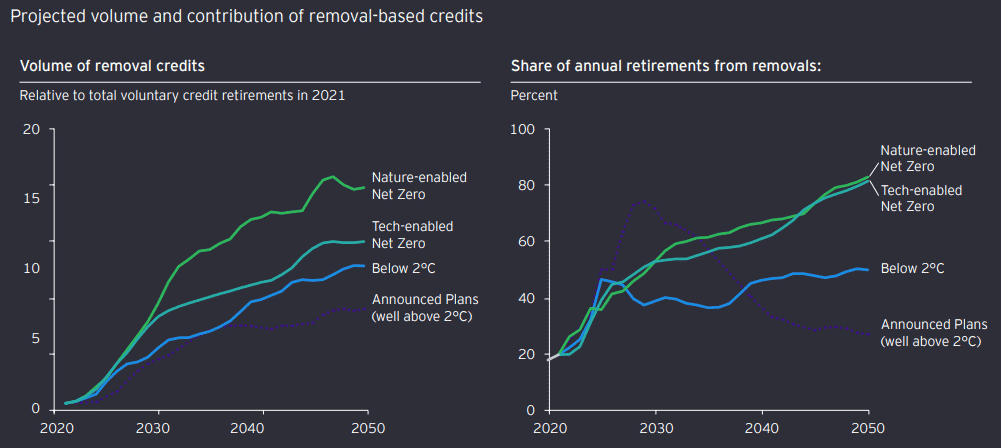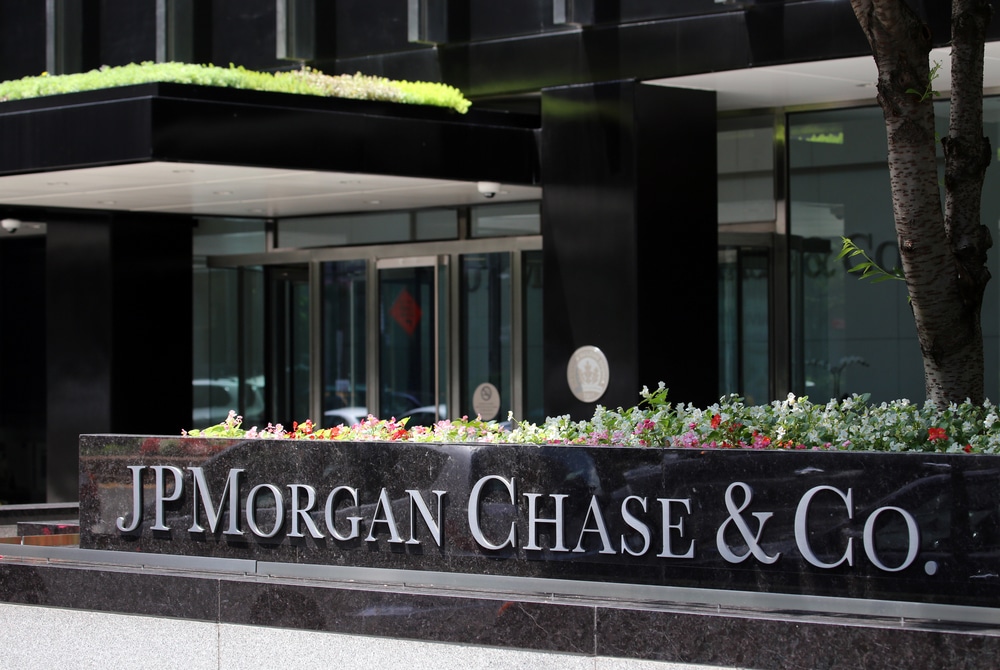JPMorgan Chase made one of the largest investments ever on carbon removal credits, agreeing to pay over $200 million on different removal technologies.
The biggest American bank’s commitment will remove a total of 800,000 metric tons of CO2 as part of its decarbonization goal.
Betting on the importance of the carbon removal industry, JPMorgan’s head of operational sustainability, Brian DiMarino, stated:
“We’re jumping in the pool all in. This is us putting our weight and our capital behind something we believe is truly important to bring to market now.”
Jumping in the Carbon Removal Bandwagon
Carbon dioxide removal (CDR) is getting traction lately as it’s clear that the pace of reducing emissions to stay within the 1.5°C limit remains too slow. Scientists say that the world has to remove 10 billion tons yearly to prevent the worst impact of climate change.
So while the market for carbon removal is still small right now, estimates suggest that it will be huge.
Key players in the industry, particularly the startups, are gaining billions of dollars from the government. The U.S. Department of Energy set aside $3.7 billion to help scale up the carbon removal industry. That’s part of the $12 billion funding support from President Biden’s Bipartisan Infrastructure Law.
But critics say that CDR will only allow fossil fuel companies to continue to pollute. As the largest bank in the US, JPMorgan is also among the biggest financiers of both fossil fuels and clean energy. Its close ties with oil and gas firms has raised concerns from climate activists.
Along with other large American banks, JPMorgan financed fossil fuel a total of $382 billion within a 5-year period (2016-2021). But as pressure from climate groups and banks’ shareholders gets stronger, the finance sector is taking a head turn in their financing deals. Climate commitments from major banks, including JPMorgan, by the end of 2022 amounted to $5.5 trillion.
JPMorgan’s Climate Commitment
JPMorgan President and COO, Daniel Pinto noted that:
“We’re working to drive scalable development of carbon removal and storage as commercial solutions and aim to send a strong market signal.”
The chart shows the projected volume and contribution of carbon removal credits up to 2050 as reported by Ernst & Young (EY). The left chart plots the increase in credit volumes needed to meet the emissions reduction commitments, while the right one shows the share of total reductions met through carbon credits.

Carbon removal credits can cost 100x more than conventional carbon credits. The bank will still use some traditional carbon credits as long as they are high quality while the financier grows its removal purchases.
The $200+ million pledge to buy carbon credits is one way for the lender to help fight climate change. It will offset the bank’s carbon footprint.
JPMorgan will buy carbon removal credits tied to removing 800,000 metric tons of CO2 from various startups. The first $75 million was revealed last month when the bank joined Frontier, a Stripe-owned carbon removal alliance. It makes advance purchases for its members which includes large corporations including Meta, Alphabet, Shopify, and McKinsey.
JPMorgan’s climate commitment also includes a payment to Climeworks of over $20 million to remove 25,000 metric tons over 9 years. Climeworks is a Swiss CDR company that captures CO2 directly from the air (direct air capture) using giant fans.
- Last year, JPMorgan helped Climeworks raise $650 million from investors to scale its DAC efforts.
The bank is also buying about 30,000 carbon removal credits from Charm Industrial over 5 years. Charm is a CDR startup that turns biomass (plant waste) into bio-oil and pumps it underground.
Last week, Frontier separately closed a $53 million carbon removal deal with Charm to capture 112,000 tons of CO2.
JPMorgan’s Decarbonization with Removal Credits
Large companies are using a mix of emissions reduction and carbon removal means to meet their climate goals. JPMorgan aims to lower its carbon emissions 40% by 2030 from 2017 levels.
The bank also seeks to match its operational emissions from fuel consumption with carbon removals by 2030. Such a move is one of the first pledges by a large company.
JPMorgan’s pledge of 800k removal is the 2nd-largest purchase in history, which is equal to removing annual CO2 footprint of about 160,000 passenger cars. The biggest deal so far is made by Microsoft with energy giant Ørsted, which involves removing 2.8 million tons.
The majority of the bank’s commitment involves a 15-year deal with CO280, another CO2 removal startup. The company captures CO2 absorbed by plants when they’re used in industrial processes.
The rest of the 800k tons of removal will come through Frontier wherein JPMorgan will give clients access to $25 million in carbon removal credits while pledging $50 million in purchases to offset its own carbon footprint.
By willing to pay years in advance, big firms like JPMorgan seek to boost the CDR industry’s growth. They agree to pay hundreds of dollars for every carbon credit that can deliver a ton of removal to help reverse global warming while betting on the credits they need to achieve decarbonization goals.

